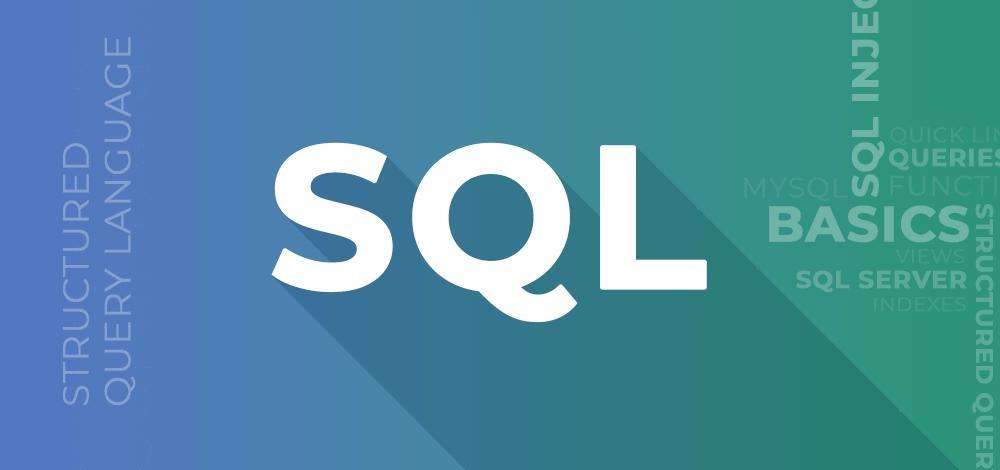
Welcome to the world of data manipulation and mastery! SQL, or Structured Query Language, is the cornerstone of data analysis, and this tutorial is your ultimate guide to becoming a SQL savant.
Whether you’re a budding data analyst, a business owner seeking insights, or a developer looking to refine your database skills, you’ve come to the right place.
SQL is the lifeblood of data-driven decision-making. It’s the language that allows us to converse with databases, extract meaningful information, and make informed decisions. In this tutorial, we’ll start with the basics and gradually build up to more complex queries.
In this guide, you’ll pick up everything from the simple to the more complex aspects of SQL, including how to query, join tables, guard against SQL injection, add new data, and set up your own tables in SQL. Learning SQL is straightforward, and you don’t need any prior knowledge to get started.
Thus, SQL is the go-to language for working with databases. It’s short for Structured Query Language.
Created by IBM’s computer whizzes back in the ‘70s, SQL lets you craft, modify, erase, and fetch data in systems like MySQL, Oracle, PostgreSQL, and more. In essence, SQL is the language that lets you talk to databases.
What is a Database?
Before we delve into this complimentary SQL guide, it’s essential to grasp the concept of a database.
Think of data as the modern world’s driving force. Yet, without structure, data is just a jumble of facts. That’s where databases come in. A database is a systematic assembly of structured information, typically managed by a database management system (DBMS). Databases are our go-to for efficiently storing, retrieving, and handling data on a computer.
SQL Example
In this beginner-friendly SQL tutorial, we’ll dive into hands-on SQL scenarios to handle employee records in a database. We’ll craft a table designed to archive employee details and fill it with illustrative data such as Employee_Id, Name, Age, Department, and Salary.

To fetch data from the ‘employees’ table where the salary exceeds $55,000.00, you’d use the SELECT statement. Here’s how you could structure the query:
Query:
sql
SELECT *
FROM employees
WHERE salary > 55000.00;
Output

This SQL command will retrieve all the columns for employees earning more than $55,000.00. It’s a straightforward and effective way to filter data in SQL.
Explanation:
This SELECT statement pulls up entries from the ‘employees’ table where the Salary figure tops $55,000.00. The asterisk (*) signifies our intent to gather every column for the records that match. The WHERE clause sifts through the data to show only those that meet the set criterion.
Why SQL Matters
In an age where data is king, SQL is the key to unlocking its potential. It’s not just for IT professionals; marketers, finance experts, and even healthcare administrators can benefit from understanding SQL.
Why Learn SQL?
SQL empowers you to swiftly extract insights from data with remarkable efficiency. It’s the tool we use for data manipulation tasks in databases—like creating, reading, updating, and deleting—through SQL queries.
It enables interaction with data housed in relational database management systems. Writing SQL queries is straightforward for anyone familiar with English. Here are some standout features of SQL:
- Ease of Management: Even with minimal coding experience, you can effectively manage a database using SQL.
- Compatibility: SQL is compatible with various database systems including those from Oracle, IBM, Microsoft, and more.
- Simplicity: The language is user-friendly and easy to grasp.
- Standardization: SQL is recognized by ANSI and ISO as a standard language for database operations.
- Speed: SQL can retrieve substantial volumes of data at high speeds.
Getting Started with SQL
Before diving into the deep end, let’s get comfortable with the SQL environment. We’ll explore different database management systems, set up a workspace, and run our first simple queries.
Pre-Requisites to Learn SQL
If you’re eager to learn SQL, this complimentary tutorial is designed for clarity and ease of understanding. Throughout its creation, we’ve focused on delivering top-notch content to solidify your grasp of SQL.
We presume you come with a foundational understanding of computer science concepts, such as databases and their varieties.
With a preliminary knowledge of RDBMS, this SQL guide will equip you with the comprehensive know-how to excel in SQL.

The SQL Roadmap overview: From Novice to Expert
Our journey will take us through the following milestones:
- Fundamentals: Learn the syntax and structure of SQL commands.
- Queries: Master the art of retrieving data with precision.
- Functions: Discover the power of SQL functions to manipulate data.
- Joins: Understand how to combine data from multiple tables.
- Subqueries: Dive into advanced data retrieval techniques.
- Best Practices: Develop habits that lead to efficient and secure SQL coding.
Advanced SQL Techniques
As we progress, we’ll tackle complex scenarios and optimize our queries for performance. We’ll also delve into the nuances of transaction control and error handling.
Real-World Applications
SQL isn’t just theory; it’s a practical skill. We’ll examine case studies and real-world applications of SQL in various industries.
Complete SQL Complete Tutorial .
1. SQL Basics
SQL, or Structured Query Language, is an essential skill for anyone looking to engage with databases. As the standard language for database interaction, it enables users to create, administer, and extract data from relational databases. This SQL tutorial PDF lays out all the foundational elements of SQL. Delve into this segment to refine your SQL skills.
- What is a Database
- Types of Databases
- What is DBMS
- Relational and Non Relational Databases
- What is SQL?
- SQL Data Types
- SQL Operators
- SQL Commands
2. Create Database in SQL
The initial step in electronically saving information with SQL is to create a database. In this part of the tutorial, we’ll explore how to Create, Select, Drop, and Rename databases, complete with examples to guide you.
- SQL CREATE Database
- SQL DROP Database
- SQL RENAME Database
- SQL SELECT Database
3. Tables in SQL
Tables are the foundation of any SQL database. Essentially, they function much like spreadsheets, organizing data into a structured grid. In this part, you’ll discover how to Create, Drop, Delete, and perform other operations related to tables.
- SQL CREATE TABLE
- SQL DROP TABLE
- SQL DELETE TABLE
- SQL RENAME TABLE
- SQL TRUNCATE TABLE
- SQL COPY TABLE
- SQL TEMP TABLE
- SQL ALTER TABLE
4. SQL Queries
In this tutorial section, you’re going to become familiar with SQL queries such as the SELECT statement, which is fundamental for retrieving data from a database. You’ll also learn about variations like SELECT LAST, which can be used to get the most recent entries. Explore this section and learn how to use these queries.
- SQL SELECT Statement
- SQL SELECT TOP
- SQL SELECT FIRST
- SQL SELECT LAST
- SQL SELECT RANDOM
- SQL SELECT IN
- SQL SELECT Multiple
- SQL SELECT DATE
- SQL INSERT Multiple Rows
- SQL INSERT INTO
- SQL UPDATE Statement
- SQL DELETE Statement
- SQL DELETE Duplicate Rows
5. SQL Clauses
Dive into the essentials of SQL Clauses with this guide. In this part, you’ll pick up how to effectively employ commands like SELECT, WHERE, JOIN, GROUP BY, and others to carry out database queries with precision.
- SQL WHERE Clause
- SQL WITH Clause
- SQL HAVING Clause
- SQL ORDER By Clause
- SQL Group By Clause
- SQL LIMIT Clause
6. SQL Operators
“SQL Operators” are the basic symbols and keywords in SQL that allow users to carry out different operations. This includes using SQL AND, OR, LIKE, NOT, among other operators, on databases. In this section, we’ve thoroughly explained all the SQL operators, complete with examples to illustrate their use.
- SQL AND Operator
- SQL OR Operator
- SQL LIKE Operator
- SQL IN Operator
- SQL NOT Operator
- SQL NOT EQUAL Operator
- SQL IS NULL Operator
- SQL UNION Operator
- SQL UNION ALL Operator
- SQL EXCEPT Operator
- SQL BETWEEN Operator
- SQL ALL Operator
- SQL ANY Operator
- SQL INTERSECT Operator
- SQL EXISTS Operator
- SQL CASE Operator
7. SQL Aggregate Functions
If you’re tallying up the total sales for a specific item, figuring out the average age of your clientele, or pinpointing the top value in a collection of data, SQL Aggregate Functions simplify and streamline these processes.
- SQL Aggregate Function
- SQL Count() Function
- SQL SUM() Function
- SQL MIN() Function
- SQL MAX() Function
- SQL AVG() Function
8. SQL Data Constraints
Constraints in SQL serve as the rulebook for your data, setting the standards for what’s allowed and what’s not. They’re the guardians of your database’s integrity, ensuring that only the right data gets through, keeping errors at bay. Dive into this section to master the art of SQL Data Constraints.
- SQL NOT NULL Constraints
- SQL UNIQUE Constraints
- SQL Primary Key Constraints
- SQL Foreign Key Constraints
- SQL Composite Key
- SQL Unique Constraints
- SQL Alternate Key
- SQL CHECK Constraints
- SQL DEFAULT Constraints
9. SQL Joining Data
SQL joins are indeed like a weaver’s loom, intertwining data from various tables through shared connections. This section will guide you through the use of the JOIN command, showing you how to combine data in a meaningful way. Here’s a quick look at how you might use a JOIN:
- SQL JOIN
- SQL Outer Join
- SQL Left Join
- SQL Right Join
- SQL Full Join
- SQL Cross Join
- SQL Self Join
- SQL UPDATE with JOIN
- SQL DELETE JOIN
- SQL Recursive Join
10. SQL Functions
SQL functions provide a streamlined and flexible method for analyzing data. By incorporating these functions into your queries, you can deepen and refine your understanding, turning basic data into practical information.
- Date Functions in SQL
- String Functions in SQL
- Numeric Functions in SQL
- Statistical Functions in SQL
- JSON Functions in SQL
- Conversion Functions in SQL
- Datatype Functions in SQL
- LTRIM Function in SQL
- UPPER Function in SQL
- RTRIM Function in SQL
11. SQL Views
Views do simplify data access, allowing individuals to retrieve necessary information without complex query structures. They function as a form of data protection too, securing sensitive details while providing essential data access.
- SQL CREATE VIEW
- SQL DROP VIEW
- SQL UPDATE VIEW
- SQL RENAME VIEW
- SQL DELETE VIEW
12. SQL Indexes
Indexes streamline the search process by sorting specific columns in a set sequence, enabling swift location of the required data. This section outlines all the essential topics you should cover as you learn SQL.
- SQL Indexes
- SQL Create Index
- SQL Drop Index
- SQL Show Indexes
- SQL Unique Index
- SQL Clustered Index vs Non-Clustered Index
13. SQL Miscellaneous Topics
In this varied section, you’ll come across topics such as stored procedures, which automate routine tasks, triggers that initiate actions automatically when data alters, and window functions that handle intricate calculations within a single query.
- SQL Wildcards Operators
- SQL Comments
- SQL Pivot and Unpivot
- SQL Injection
- SQL Hosting
- SQL Performance Tuning
- SQL Stored Procedures
- SQL Transactions
- SQL Sub Queries
- SQL Using Sequences
- SQL Auto Increment
- SQL Window functions
- SQL Date & Time
- SQL Cursors
- SQL Common Table Expressions
- SQL Database Tuning
- SQL Dynamic SQL
SQL Tutorial Important Note
In SQL, keywords are not case-sensitive, meaning “update” is equivalent to “UPDATE“.
SQL Important Commands
Here is the list of some important SQL Commands:
| Commands | Descriptions |
| SELECT | Used to retrieve data from a database. |
| INSERT | Adds new records or rows to a table. |
| UPDATE | Modifies existing records in a table. |
| DELETE | Removes records from a table. |
| CREATE TABLE | Creates a new table in the database. |
| ALTER TABLE | Modifies an existing table structure. |
| DROP TABLE | Deletes a table from the database. |
| CREATE INDEX | Creates an index on a table column to speed up data retrieval. |
| DROP INDEX | Removes an index from a table. |
| CREATE VIEW | Creates a virtual table based on the result of a SQL statement. |
| DROP VIEW | Deletes a view from the database. |
| INSERT INTO SELECT | Inserts data from one table into another based on a query. |
| TRUNCATE TABLE | Removes all records from a table, but keeps the table structure intact. |
| ALTER TABLE ADD CONSTRAINT | Adds a constraint to a table after it has been created. |
| GRANT | Gives specific privileges to database users. |
| REVOKE | Removes specific privileges from database users. |
| COMMIT | Saves all changes made since the last commit. |
| ROLLBACK | Discards all changes made since the last commit. |
| BEGIN TRANSACTION | Starts a new transaction. |
| SET TRANSACTION | Sets characteristics for the transaction. |
Applications of SQL
In sectors where database management is a day-to-day necessity, SQL has several key uses.
- Client/Server Architecture: Developers rely on SQL to link the back-end (server side) with the front-end (user interface).
- 3-Tier Architecture: SQL plays a role in the three-layer setup involving a client, an application server, and a database.
- Data Definition Language (DDL): SQL lets you independently craft a database, outline its structure, utilize it, and then remove it once it’s no longer needed.
- Data Manipulation Language (DML): With SQL, you can input, alter, and retrieve data.
- Data Control Language (DCL): SQL outlines how to safeguard your database from damage and unauthorized access.
The Benefits of SQL
SQL, or Structured Query Language, stands out in the data science realm as a favored means of dialogue between data experts and their databases. Here’s why SQL is so well-regarded:
- Simplicity and Learnability: SQL’s commands and syntax mirror everyday English, making it a breeze to learn. Its logical structure further enhances its readability and comprehensibility.
- Efficient and Swift Execution: Tailored for RDBMS (Relational Database Management Systems), SQL guarantees speedy processing of queries.
- Standardization: As a globally recognized standard, SQL ensures seamless operation across diverse database systems.
- Scalability: SQL adeptly handles vast amounts of data, scaling up without sacrificing efficiency.
SQL Quick Links:
- SQL | Subjective Problems
- SQL | Multiple Choice Questions
- SQL | Interview Questions
- SQL Interview Questions | Set 1
- SQL Interview Questions | Set 2
- SQL | Commonly asked DBMS interview questions | Set 1
- SQL | Commonly asked DBMS interview questions | Set 2
If you Prefer a course,
Why look further when our SQL course offers all you need in one comprehensive program! Enroll in our SQL Development Program today, and our advisors will be in touch to provide you with all the guidance and support you need.
Conclusion:
By the end of this tutorial, you’ll have a solid foundation in SQL and a clear path to continue your learning journey. Remember, the world of data is constantly evolving, and so should your skills. Keep practicing, stay curious, and embrace the challenges ahead.
RELATED ARTICLES
- HTML Complete Course Guide From Beginner to Advanced Levels
- HTML Tutorial & Roadmap
- CSS Tutorial & Roadmap
- CSS Complete Guide – From Novice to Pro CSS Concepts
- JavaScript Complete Guide From Beginner to Advanced Levels
- A Comprehensive JavaScript Tutorial & Roadmap
- Complete React Tutorial & Roadmap
- Complete NodeJS Tutorial & Roadmap
- C Programming Language Tutorial & Roadmap
- The Ultimate C++ Programming Language Tutorial & Roadmap
- Complete Ruby Programming Language Guide
- Complete Perl Programming Language Guide
- Complete Java Tutorial & Roadmap
- R Tutorial & Roadmap| Master R Programming with Ease
- PHP Tutorial & Roadmap: A Comprehensive Guide for Developers
- Golang (Go) Programming Tutorial & Roadmap: Go Beyond the Basics










Периодическая аккредитация врачей – это процесс, направленный на подтверждение и обновление профессиональных компетенций медицинских специалистов. Этот процесс помогает гарантировать, что врачи остаются в курсе последних медицинских знаний и практик, обеспечивая высокий уровень оказываемой медицинской помощи.
Повысьте свои компетенции: [url=https://maps-edu.ru/catalog/logopediia]логопедия дистанционное обучение высшее образование[/url] и муниципальными закупками.
Профессиональная переподготовка “Юрист по договорному праву” позволяет специалистам в области права специализироваться на договорных отношениях, которые являются основой большинства коммерческих, финансовых и личных взаимодействий в современном обществе. Курс направлен на изучение актуальных аспектов договорного права, включая составление, анализ, исполнение и расторжение договоров, а также решение споров, связанных с договорными обязательствами.
Улучшите свою карьеру: [url=https://maps-edu.ru/specialties/courses/ucitel-istorii-i-obshhestvoznaniia-pedagogiceskaia-deiatelnost-po-proektirovaniiu-i-realizacii-obrazovatelnogo-processa-v-sootvetstvii-s-fgos]профессиональная переподготовка учитель истории и обществознания[/url] и курсы логопедии доступны у нас!
I truly admired the work you’ve put in here. The design is refined, your authored material stylish, however, you seem to have acquired some trepidation about what you intend to present next. Undoubtedly, I’ll revisit more regularly, similar to I have nearly all the time, in the event you sustain this rise.
Привет! Предлагаю [url=https://do-zarplaty.xyz/]деньги в долг на месяц[/url] рядом с вами. Вы можете получить финансирование без излишних вопросов и документов. Выгодные условия займа и моментальное получение в вашем городе. Набирайте нам для получения подробной информации, или оставляйте заявку на сайте.
Приветствую! Возник вопрос про [url=https://dengizaimy.by/]быстрый займ[/url]? Предоставляем стабильный источник финансовой помощи. Вы можете получить средства в долг без избыточных вопросов и документов? Тогда обратитесь к нам! Мы предлагаем выгодные условия займа, быстрое решение и гарантию конфиденциальности. Не откладывайте свои планы и мечты, воспользуйтесь предложенным предложением прямо сейчас!
Обучение на инженера по охране труда подразумевает получение комплексных знаний и навыков, необходимых для эффективного управления охраной труда на предприятиях различных отраслей. Программа включает изучение законодательства в области охраны труда, методов анализа и управления профессиональными рисками, разработки и реализации программ по предупреждению производственного травматизма и профессиональных заболеваний. Выпускники обучения становятся способными обеспечивать высокий уровень безопасности на рабочем месте, что является ключевым фактором успешной деятельности любой организации.
Освойте новые горизонты: [url=https://maps-edu.ru/catalog/gosudarstvennye-zakupki]обучение тендерным закупкам с нуля[/url] и контролю закупок.
Здравствуйте! Предлагаем [url=https://do-zarplaty.xyz/]получить займ в Минске[/url] круглосуточно. Вы можете получить деньги без излишних вопросов и документов. Достойные условия кредитования и моментальное получение в вашем городе. Звоните для уточнения подробной информации, либо оставляйте заявку на сайте.
Курсы для учителей на сайте maps-edu.ru предоставляют широкий спектр программ повышения квалификации и переподготовки, направленных на профессиональное развитие педагогов. Эти курсы позволяют учителям осваивать новые методики обучения, инновационные образовательные технологии и подходы к ведению учебного процесса. Обучение помогает не только обновить знания в выбранной области, но и расширить компетенции, что способствует повышению эффективности обучения и развития учащихся, а также укреплению профессионального статуса учителя.
Повысьте свои компетенции: [url=https://maps-edu.ru/specialties/courses/pedagog-psixolog-prepodavatel-psixologiceskix-disciplin-1]переподготовка педагог психолог[/url] и муниципальными закупками.
Link exchange is nothing else however it is simply placing the other person’s web site link on your
page at appropriate place and other person will also do similar in favor of you.
The sketch is tasteful, your authored material stylish.